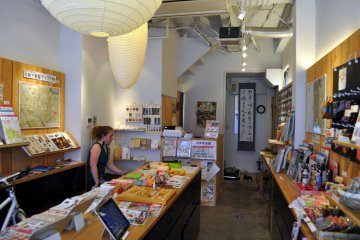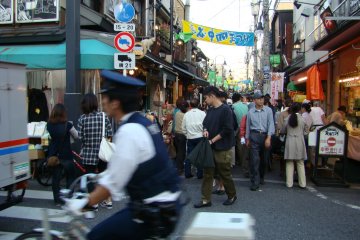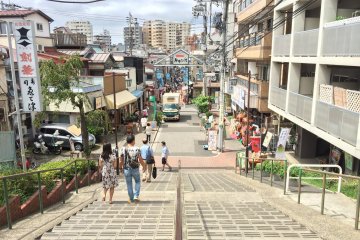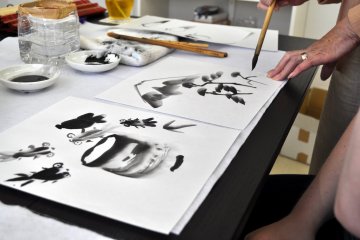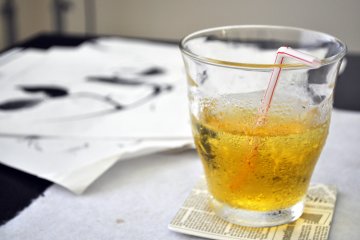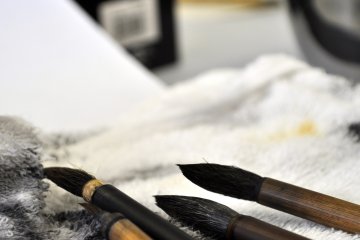Hagiwara Sekko has been doing suiboku-ga since she was just five years old.
She went to a primary school that specialized in the arts and has been doing Japanese ink painting ever since, except for a brief pause when she had gotten married and had three boys.
Sekko teaches her cultivated wisdom of ink painting for group lessons but also teaches through the Yanaka-based Yanesen Language and Culture School, a great way for tourists to get language and cultural lessons on a number of topics.
Although ink painting uses just black ink and water, I’ve recently come to understand that you can only truly appreciate certain arts after you’ve tried your hand at them. And what better teacher to learn from than Sensei Sekko.
With a kind and steady hand, she demonstrates how to paint a pot, flowers, goldfish, birds, bamboo and even a simple landscape of pine trees with Mount Fuji as the subject. Each demonstration uses at least one of the four kinds of strokes used in this type of painting.
If you know how to say it in Japanese, she’ll show you how to paint it. Any trouble you have with painting, she’ll guide the paintbrush in your hand and then let you try on your own.
The main idea behind suiboku-ga is creating the gradient from light to dark. Objects in the background should be a light gray while subjects in the forefront should be darker.
And it wouldn’t be a true Japanese lesson without slippers and a hospitable cup of tea.
Towards the end of the lesson, she asked us what we wanted to paint on a final, hard-backed piece of paper. I chose to paint bamboo, since that was what I was best at. When our masterpieces were complete, she offered to do small, index-card sized paintings for us of Bodhisattva Kannon.
The 50-minute lesson in total only cost ¥3000 and you’re able to keep everything you painted.
Even if you don’t consider yourself to be an artist, I would absolutely encourage you to try this class. It’s a relaxing and fun way to enjoy Japanese culture, and you might find yourself coming home with a new hobby.



